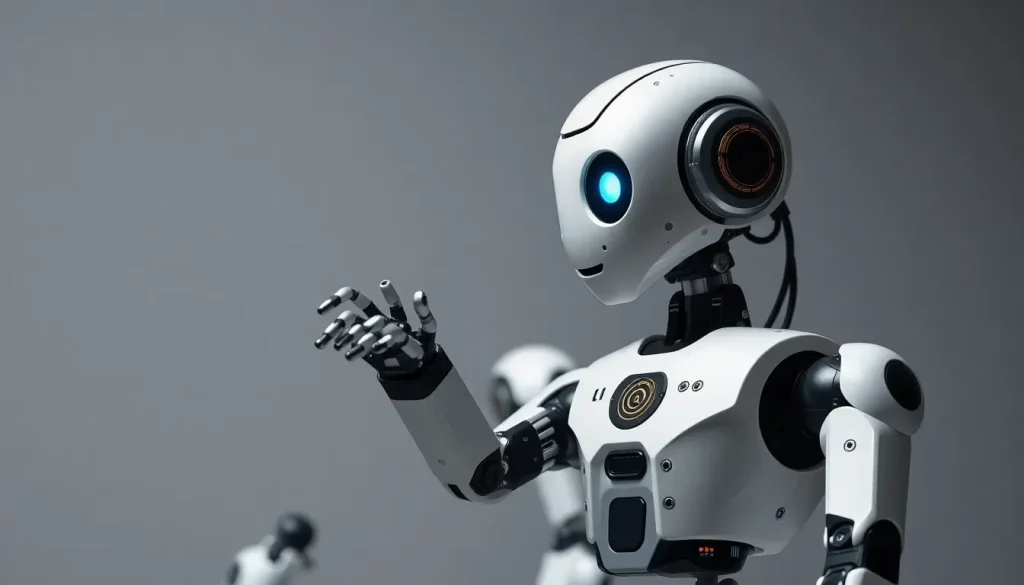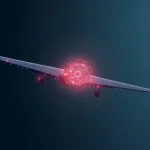Google DeepMind launches Gemini Robotics 1.5 for robot reasoning

The world of artificial intelligence is evolving at an unprecedented pace, and Google DeepMind is at the forefront of this revolution. With the unveiling of Gemini Robotics 1.5, the boundaries of what robots can achieve are being pushed further than ever. This innovative technology promises to make robots not just tools, but intelligent agents capable of learning and adapting in real-time to their environments. Let's delve into the intricacies of this groundbreaking development and explore its implications.
- Google DeepMind introduces Gemini Robotics 1.5, a groundbreaking AI for adaptable robots
- Understanding the dual components: Gemini Robotics-ER 1.5 and Robotics 1.5
- How Gemini Robotics 1.5 enhances robotic capabilities
- Practical applications and testing of Gemini Robotics 1.5
- The future of robotics with Gemini technology
Google DeepMind introduces Gemini Robotics 1.5, a groundbreaking AI for adaptable robots
Artificial intelligence has come a long way since its inception, transitioning from simple algorithms to complex systems capable of generating realistic images, videos, and even music. This evolution has enabled AI to be applied in various fields, including healthcare, finance, and entertainment. However, the latest innovation from Google DeepMind represents a significant leap forward: the Gemini Robotics 1.5, an AI designed specifically for robotic applications.
This new AI does not merely produce content like its predecessors; instead, it generates "robotic actions" that allow machines to perform tasks with a higher level of autonomy. According to Google, this technology unlocks the potential of "general learning", a concept that enables robots to learn from a wide array of experiences rather than being confined to specific training data.
Gemini Robotics 1.5 stands apart from traditional AI models by its ability to adapt based on the complexity of tasks presented. For instance, unlike earlier models, this AI can take the time to process and analyze a situation before executing a response. This adaptability is crucial for next-generation robots, which often face unpredictable challenges in real-world environments.
Understanding the dual components: Gemini Robotics-ER 1.5 and Robotics 1.5
The architecture of Gemini Robotics 1.5 consists of two core components: Gemini Robotics-ER 1.5, which focuses on reasoning, and Robotics 1.5, responsible for executing actions. This duality is essential for achieving a seamless interaction between a robot's cognitive functions and its physical capabilities.
1. **Gemini Robotics-ER 1.5**: This model is centered around a vision-language model (VLM) that processes visual inputs and textual data. Its primary role is to interpret information and devise solutions to problems without the need for predefined responses. This aspect mirrors human cognitive processes, enabling robots to tackle unexpected challenges.
2. **Robotics 1.5**: This component acts on the decisions made by Gemini Robotics-ER 1.5, translating cognitive insights into physical actions. The synergy between these two models allows robots to not only think but also act upon their thoughts, making them more versatile in various applications.
How Gemini Robotics 1.5 enhances robotic capabilities
The advancements offered by Gemini Robotics 1.5 are crucial for developing robots that can learn and adapt over time. Here are some key features that make this technology revolutionary:
- General Learning: Unlike traditional robots, which are limited to their training, Gemini Robotics 1.5 enables robots to learn new tasks independently.
- Contextual Understanding: The AI can interpret complex scenarios and respond appropriately, much like a human would.
- Improved Decision-Making: By processing more information and analyzing different perspectives, robots can make informed decisions on the fly.
- Real-Time Adaptation: The ability to adjust strategies based on immediate feedback allows robots to perform better in dynamic environments.
Practical applications and testing of Gemini Robotics 1.5
Google DeepMind has initiated trials of this advanced AI system with two distinct robotic platforms: a humanoid robot named Apollo and another robot called Aloha, equipped with dual arms. These trials aim to assess how well the robots can integrate the reasoning capabilities of Gemini Robotics-ER 1.5 with the action execution of Robotics 1.5.
By employing these robots in practical scenarios, Google seeks to explore a range of applications, including:
- Healthcare: Robots could assist in patient care by learning to perform various medical tasks.
- Manufacturing: Adaptable robots could optimize production processes by learning from their environment.
- Service Industries: In customer service, robots could adapt their interactions based on customer feedback and behavior.
The future of robotics with Gemini technology
The implications of Gemini Robotics 1.5 extend far beyond mere automation. As robots become more intelligent, they will likely change the landscape of various industries. Here are some potential future developments:
- Enhanced Collaboration: Robots could work alongside humans, learning from their actions and improving performance through collaboration.
- Expanding Roles: The versatility of these robots may lead to their deployment in sectors previously deemed unsuitable for automation.
- Continuous Learning: Future iterations of this technology could enable robots to learn continuously, leading to perpetual improvement in their capabilities.
For those interested in visualizing these concepts, you can watch an informative video about Gemini Robotics 1.5, which provides insights into its functionalities and applications:
In conclusion, the introduction of Gemini Robotics 1.5 marks a significant milestone in the field of robotics and AI. Its ability to reason and adapt sets a new standard for robotic technology, paving the way for smarter, more capable machines that can tackle real-world challenges with ease and efficiency. As we continue to explore the potential of this innovative AI, the future of robotics looks brighter than ever.




Leave a Reply